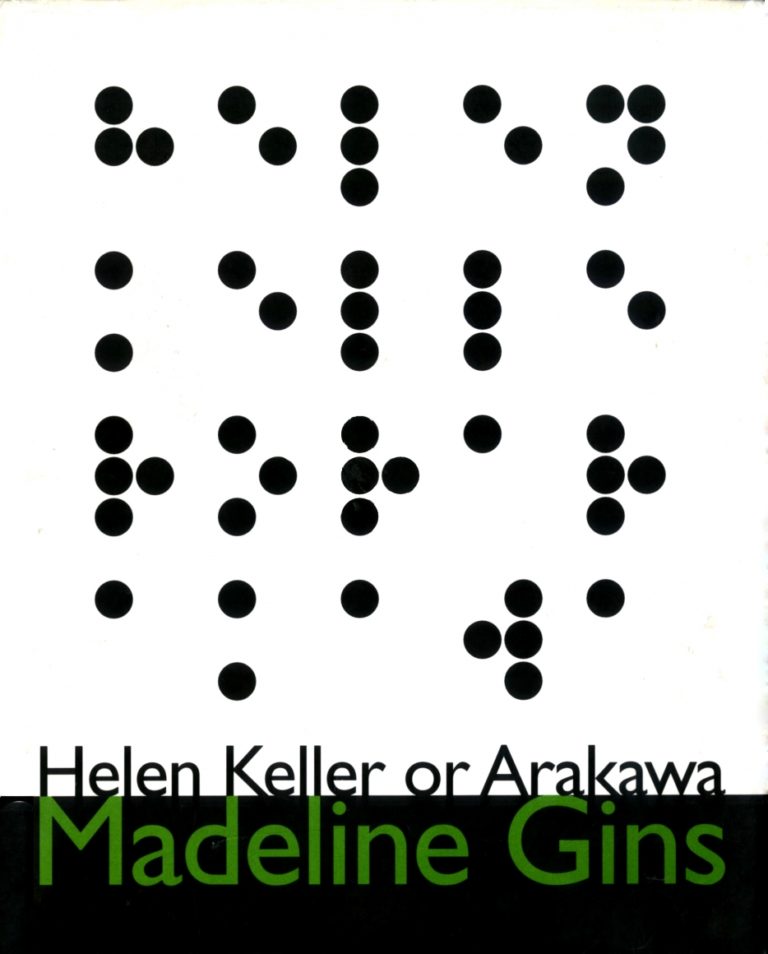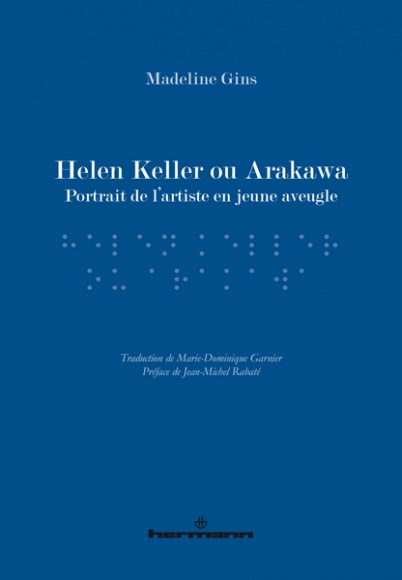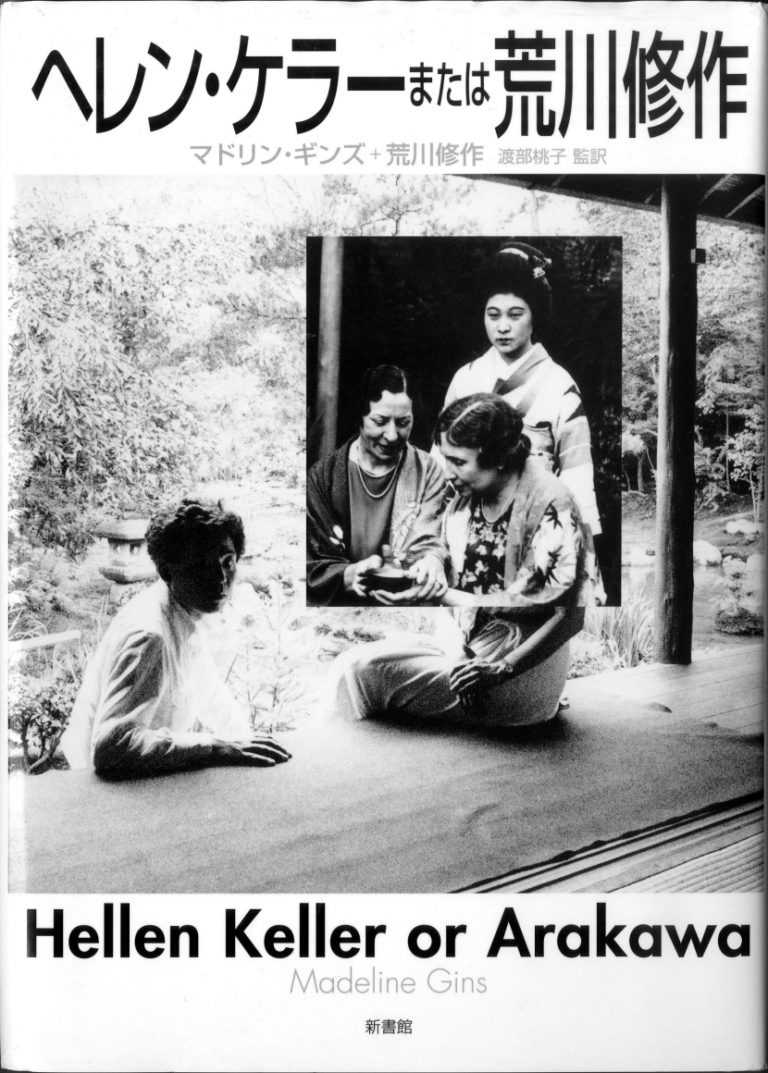


Helen Keller or Arakawa gives rise to a new form of “speculative” fiction, conveying the potential for human experience now and here rather than depicting worlds distant in space or time. The novel tracks consciousness and identity through the intermingling paths of its three protagonists: the historical person Helen Keller; the iconoclastic artist Arakawa; and the writer herself, Madeline Gins. At the same time, this innovative work advances and upsets key tenets of contemporary critical theory.
The book takes off from Helen Keller’s evocative journal entries, exemplifying a unique female intelligence in concert with recognizable masculine varieties. On the deck of an ocean liner, Helen and Niels Bohr discuss color, olfaction, and the compulsion inside protoplasm, speaking with their hands. The shinnyu episode offers a discursive look at the Japanese mark that in its origin denotes both “going” and “pausing.” One chapter thickly examines the disappearing phoneme “th” leading through feathers to birds – with an addendum on the vocabulary of the Scots. The novel is peopled with unlikely characters. Voluntar, the size of a dot (“found lounging in the figurative, sword in hand”) travels in an instant from zero to top speed. In Critical Beach, the terrain itself comes alive, as a critically active sensibility, to help devise new modes of perceiving.
Gins says: “When Helen Keller tries to explain the world, she often ends up describing an Arakawa painting.” The novel narrates how the artist utilizes visual abstraction to outline forms of the world that otherwise remain hidden. Helen Keller does it with her body, aided by an incisive verbal intelligence and boundless curiosity. Throughout the unfolding, Gins pilots a kind of “mute” speech – natural and sensual, intensely pleasurable – which subsumes great heuristic constructions in its wake.
- English edition:
Hardcover: 314 pages
Publisher: Burning Books, 1994
ISBN: 978-0936050119 - Japanese edition:
Hardcover: 492 pages
Publisher: Shinshokan, 2010
ISBN: 978-4-403-12023-7 - French edition:
Paperback: 308 pages
Publisher: Hermann, 2017
ISBN: 978-2-7056-9389-3
